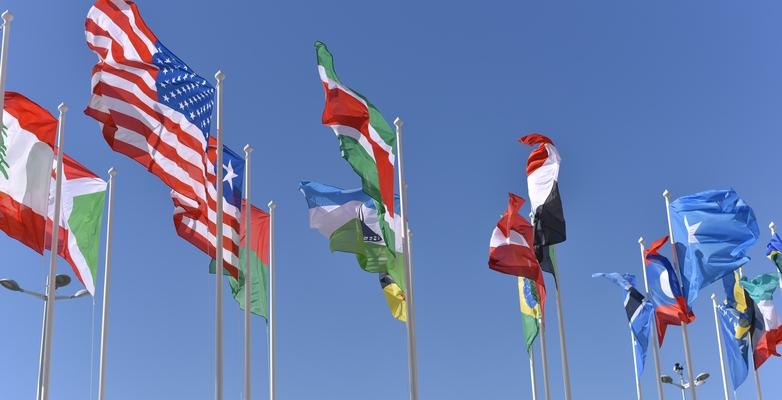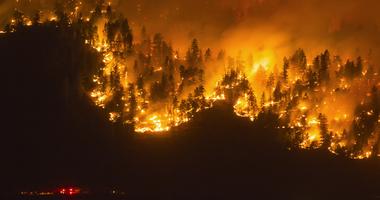
COP 101: An Introduction to International Climate Negotiations
We’re going back to the basics to talk about what COP is, why it’s important, and how you can campaign for change.
The jargon… The history… When it comes to big international climate events like COP, it can be hard for climate advocates to wade through it all and get to the heart of what is really going on. But understanding the background can help advocates like you organize for greater change. That’s why we’re here to break it down and give you some first steps for action!
The Basics
COP stands for the Conference of the Parties. The “parties” are the 198 nations that have ratified the 1992 United Nations Framework Convention on Climate Change (UNFCCC), the world’s first international treaty on climate change.
The parties meet every year at COP to review the actions they are taking to address climate change, refine their greenhouse gas emissions reduction targets, form legally binding treaties and agreements, set political commitments, and discuss pertinent issues in the climate space.
The first COP took place in 1995. As of August 2023, the world has had 27 COPs, each of which have been held in different party countries around the world. Now, the world is gearing up for COP 28, which will take place in the United Arab Emirates from November 30 to December 12, 2023.
The Timeline: A quick timeline of major events and treaties (negotiations and smaller agreements at COPs in-between all set the stage for the big moments seen here):
- 1992 – United Nations Framework Convention on Climate Change is Adopted
- 1995 (COP 1) – COP 1 Takes Place in Berlin
- 1997 (COP 3) – Kyoto Protocol is Adopted
- 2015 (COP 21) – Paris Agreement is Adopted
- 2022 (COP 27) – Loss and Damage Fund is Founded
- 2023 (COP 28) – COP 28 will take place in UAE
For a more in-depth timeline of global climate agreements, check out our blog here!
Key Terms
The United Nations Framework Convention on Climate Change (UNFCCC): The UNFCCC, signed in 1992, is the world’s foundational climate treaty. It established the global aim to stabilize “greenhouse gas concentrations in the atmosphere at a level that would prevent dangerous anthropogenic interference with the climate system.” While the UNFCCC did not set any specific emissions reductions goals, it called for research, reporting, negotiations, and future implementing agreements (such as emission targets and global climate finance mechanisms) to be made. It also laid out a structure (annual COPs) through which parties could come together to make these agreements.
Intergovernmental Panel on Climate Change (IPCC): The IPCC, set up in 1988 by the World Meteorological Organization and the UN Environment Programme, is the leading international body on climate science. It regularly releases reports that synthesize published and peer-reviewed research conducted by experts around the world. This information helps the UNFCCC and international governments make informed policy decisions. Many agreements made at COPs are informed by IPCC research. For example, negotiations and policies set forth in the Paris Agreement (see below) were largely informed by the scientific findings of the IPCC’s fifth assessment report, finalized in 2014. The most recent IPCC report, the Sixth Assessment Report (released in stages from 2021-2022), covers various topics including physical science, climate adaptation, and mitigation.
Kyoto Protocol: Adopted in 1997 at COP 3, the Kyoto Protocol is the world’s first international climate treaty with binding emissions reduction targets. It bound 37 industrialized nations, economies in transition, and the European Union to meeting prescribed targets for reducing their greenhouse gas emissions. The average emissions reduction target for these countries during the first commitment period of 2008-2012 was 5% below 1990 levels. The protocol also included Flexibility Mechanisms, which allowed countries to reduce their net emissions by taking actions like investing in sustainable development in other countries. While these mechanisms were not successful, they were revolutionary for their time and set up new ways of thinking about developed countries’ global responsibilities.
The Paris Agreement: Adopted in 2015 at COP 21, the Paris Agreement is another legally binding international climate treaty that requires all 196 nations and economic unions that adopted it to set emissions reductions plans. The goal of the agreement is to hold “the increase in the global average temperature to well below 2°C above pre-industrial levels” and pursue efforts “to limit the temperature increase to 1.5°C above pre-industrial levels.”
1.5°C: As seen above, 1.5°C is the limit in global average temperature rise above pre-industrial levels that world leaders agreed to strive for when they signed onto the Paris Agreement. For all our Fahrenheit users out there, 1.5°C is equivalent to 2.7°F. If the rise in global average temperatures exceeds 1.5°C, scientists predict that many of earth’s natural systems will be pushed towards dangerous tipping points, or moments at which the global climate system is dramatically changed and warming is further exacerbated. (Think: ice sheet collapse causing less heat to be reflected back into space.) Climate impacts, such as drought, heat waves, and floods, at levels beyond 1.5°C also promise to be far worse.
Loss and Damage Fund: At COP 27 in 2022, countries agreed to establish a fund dedicated to helping vulnerable countries address and respond to the catastrophic effects of climate change. As of August 2023, it is yet to be determined who will pay into the fund, where the money will come from, and which countries will benefit. (Keep an eye out for decisions like this to be made at future COPs!)
Why Do We Need COPs?
As our world faces the existential threat of the climate crisis, it is essential that we come together as a global community to find just solutions, build networks of resilience, and hold each other accountable.
COPs provide the opportunity for governments, researchers, and activists across the world to do just that. They give representatives from the most vulnerable communities the opportunity to directly address big emitters, provide forums for leaders to develop international climate finance mechanisms, and encourage nations to set new rounds of emissions reduction targets together.
Unfortunately, the emissions reductions targets set at COPs thus far have been insufficient to keep our future climate below the 1.5°C threshold. According to a recent UN climate change report, the combined pledges of 193 Parties under the Paris Agreement as of September 2022 put the world on track to hit around 2.5°C above pre-industrial levels by the end of the century. This is an increase much higher than our world can afford.
What We Need to Do
In order to ensure a livable future for all of us, we need to encourage world leaders to both scale up and rapidly implement their emissions reductions pledges.
Join us to learn more about the COP process and how we can pull on the levels of power to demand greater emissions reductions and a true net-zero future by checking out our strengthening international cooperation on climate campaign here.




